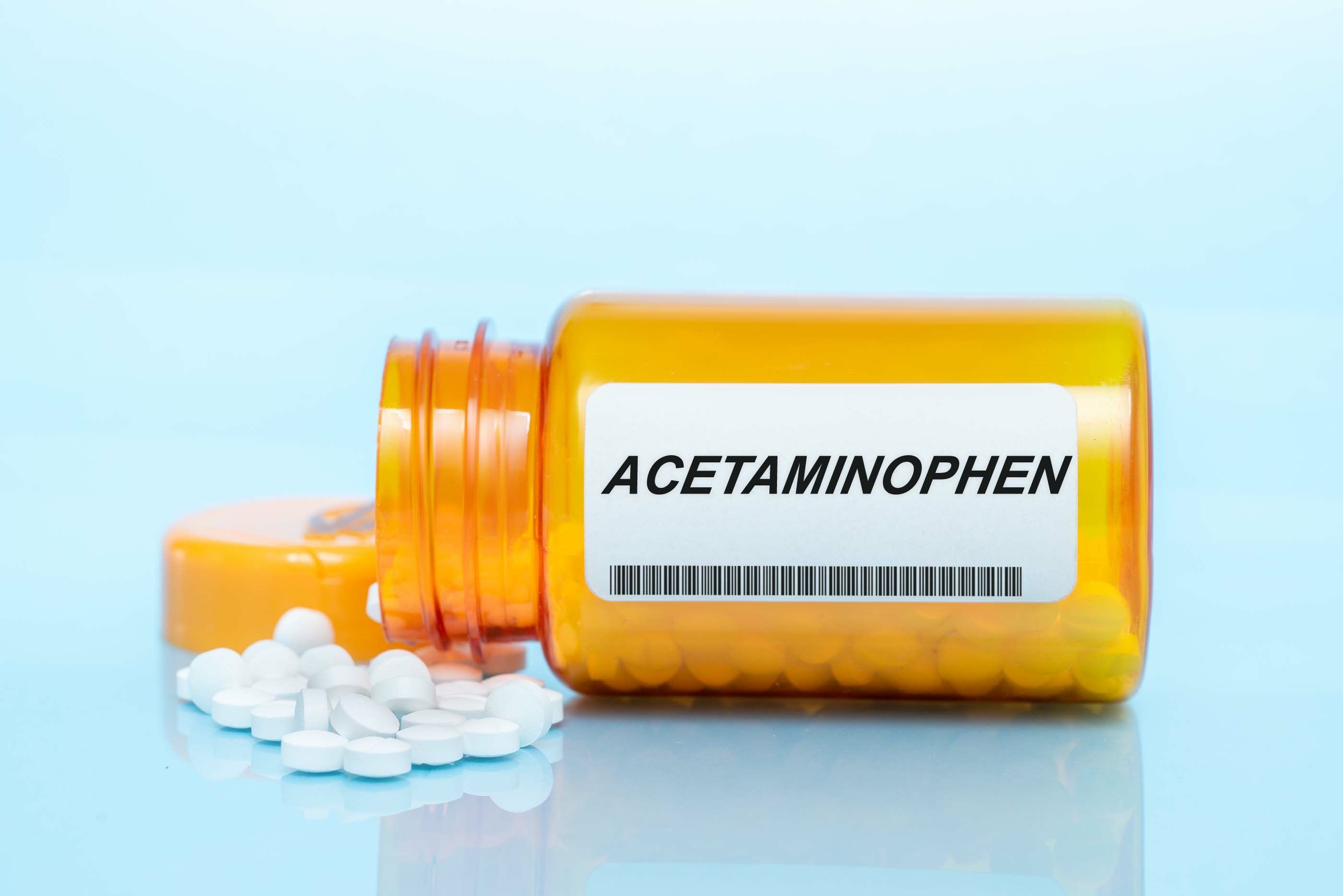News
Article
Acetaminophen Use Requires Careful Dosing in Patients With SMA, Study Says
Author(s):
A non-randomized, open-label, single-site clinical trial evaluated the safety and pharmacokinetics of acetaminophen intake in adults and children with spinal muscular atrophy (SMA) type II.
Results from a recent study published in Neuromuscular Disorders suggest that patients with spinal muscular atrophy (SMA) and low skeletal muscle mass who are administered acetaminophen could be at an increased risk of developing hepatotoxicity.
Acetaminophen Bottle | image credit: luchschenF - stock.adobe.com

Despite the availability of novel, diseases-modifying treatments in recent years, patients with SMA can frequently experience comorbidities such as low bone mineral density, malnutrition, and scoliosis. As authors of the present study note, doses of acetaminophen are a common post-operative regiment to treat pain in the plethora of patients who undergo procedures for scoliosis. However, patients with SMA are administered the same doses as subjects without SMA. In connection, many of these patients experience hepatotoxic side effects from acetaminophen and this consequence may be associated with lower muscle masses in this population.
N-acetyl-p-benzo-quinone imine (NAPQI) is a potentially toxic metabolite stemming from acetaminophen conjugation. Glutathione (GSH) is vital for conjugating NAPQI to a non-toxic substance; however, the synthesis of GSH is linked to skeletal muscle, and the abundance and function of skeletal muscle is impacted by SMA. Due to this reality, patients with SMA can be GHS deficient and, in turn, more vulnerable to hepatotoxic effects from acetaminophen.
Further evaluating the safety and pharmacokinetics of acetaminophen treatment in SMA could provide many benefits for patient outcomes, such as the identification of liver biomarkers that can stratify patient risks more efficiently.
Between February 2019 and April 2021, 12 patients with SMA type 2 (6 children and 6 adults) participated in a study at the Copenhagen Neuromuscular Center, Rigshospitalet. Participants were administered 15/mg/kg/dose of acetaminophen every 6 hours for three consecutive days—with no more than 1 gram 4 times a day. Liver biomarkers (alanine aminotransferase [ALT], alkaline phosphate, lactate dehydrogenase [LDH], aspartate aminotransferase (AST), bilirubin, international normalized ratio [INR], microRNAs 122 and 192 [miRNA 122 and 192]) as well as kidney biomarkers (potassium, creatinine, urea, sodium) and creatinine kinase (CK) were collected over the first and second treatment days.
Primary outcomes included the clearance of total acetaminophen, acetaminophen-sulfate, -glucuronide, -oxidative metabolites, as well as unmetabolized acetaminophen in patients with SMA and the volume of distributed acetaminophen compared with healthy controls (HC, n = 11).
Adult patients with SMA (SMAa) exhibited significantly lower total clearance (14.13 L/h vs 21.51; P < .01), as well as significantly lower formation rates of non-toxic metabolites sulfate (4.70 L/h vs 9.50 L/h; P < .01) and glucuronide (3.87 L/h vs 7.25; P < .001) compared with HC. Children patients with SMA (SMAc) also demonstrated lower total clearance—although not statistically significant—and formation of sulfate (4.58 L/h; P < .01) and glucuronide (3.61, P < .01) compared with HC.
The formation of non-toxic oxidative metabolites from NAPQI were also significantly lower in patients with SMA compared with HC (0.12 L/h [SMAa] and 0.10 L/h [SMAc] vs 0.22 L/h; P < .01). Furthermore, the volume of distribution of acetaminophen and associated metabolites was significantly reduced in patients compared with HC (53.02 L [SMAa] and 41.50 L [SMAc] vs 69.46 L; P < .05).
“The oxidative pathway is the most important pathway regarding acetaminophen’s toxic effects and safety,” the authors stated. “With a lower total clearance, the patient’s elimination of the drug from the body is prolonged. Prolonged treatment of acetaminophen may therefore lead to the accumulation of acetaminophen and more of the drug being metabolized in the oxidative pathway. Thus, monitoring of the standard liver biomarkers such as ALT, GGT, and LDH during treatment with acetaminophen in SMA patients could be an important safety measurement, especially the first time a patient is treated.”
This statement was reinforced by the mention of one adult patient with SMA in their study who exhibited heightened levels of ALT (7 U/L to 98 U/L [normal range is 10-70 U/L) and AST (21 U/L to 147 U/L [normal range is 15-45 U/L]) after two days of taking acetaminophen. Additionally, the authors observed that this patient’s concentration of miRNA 122 and miRNA 192 increased 3- and 25-fold only 6 hours after the first dose of acetaminophen. While their ALT eventually normalized after 8 days, and no other patients registered elevated levels like this, the authors posit the importance of monitoring patients with SMA in the first two days of acetaminophen treatment.
To conclude, the researchers emphasized the importance of pediatric dosing of acetaminophen in patients with SMA and how these amounts should be calculated after measuring a patient’s weight. Their official recommendation is 15/mg/kg/dose, with no more than 4000 mg daily.
Reference
Naume MM, Zhao Q, Haslund-Krog SS, et al. Acetaminophen treatment in children and adults with spinal muscular atrophy: a lower tolerance and higher risk of hepatotoxicity. Neuromuscul Disord. Published online November 12, 2023. doi:10.1016/j.nmd.2023.11.005




